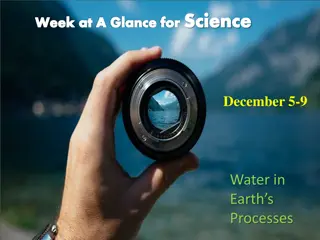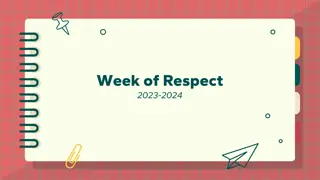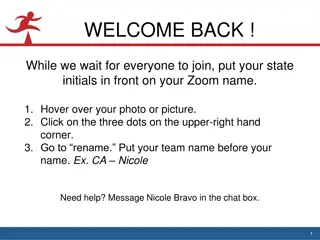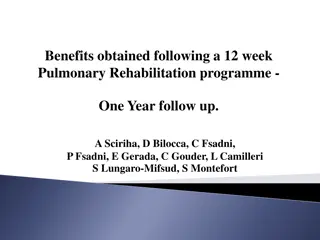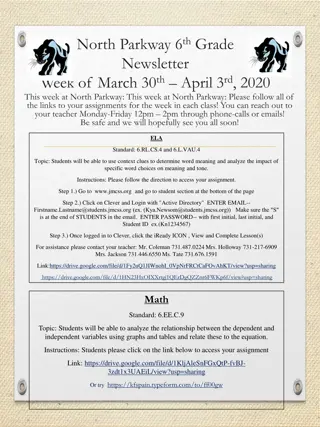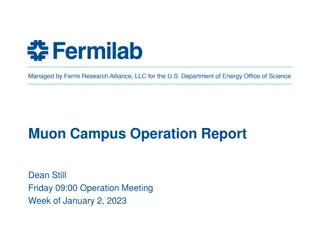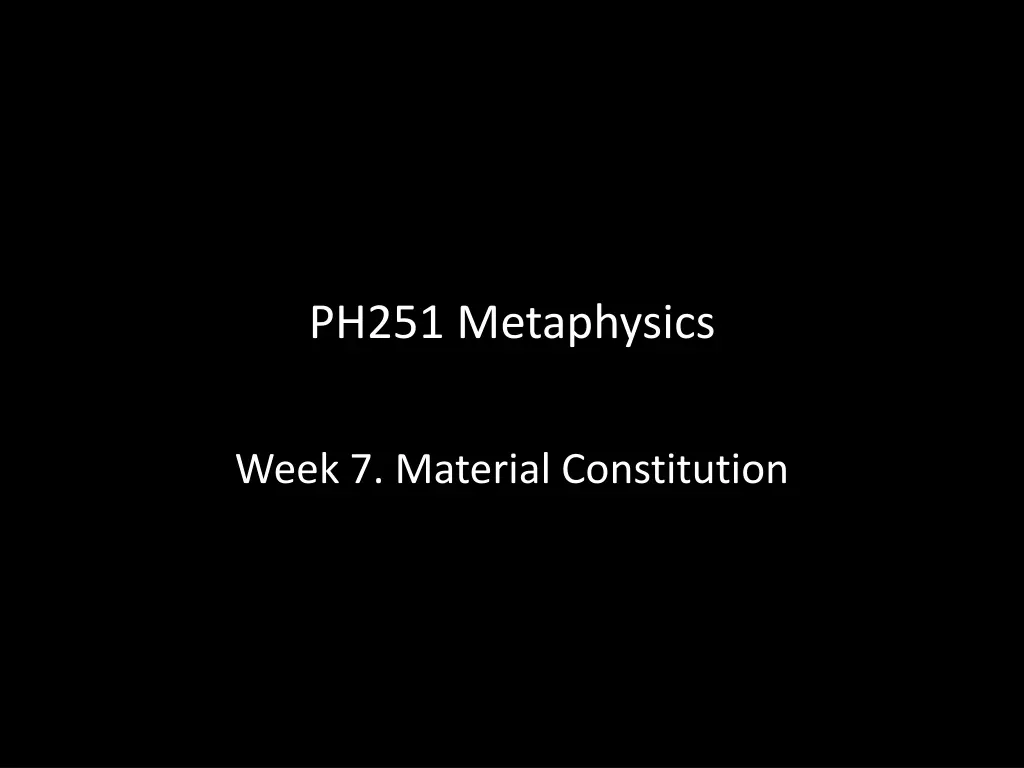
Material Constitution in Metaphysics: Ancient Puzzle and Paradox
Dive into the intriguing concept of material constitution in metaphysics, exploring ancient puzzles and paradoxes regarding the identity of material particulars as substances. Delve into the Statue and Lump paradox, the Standard Story, and the associated problems and difficulties in this thought-provoking exploration.
Download Presentation

Please find below an Image/Link to download the presentation.
The content on the website is provided AS IS for your information and personal use only. It may not be sold, licensed, or shared on other websites without obtaining consent from the author. If you encounter any issues during the download, it is possible that the publisher has removed the file from their server.
You are allowed to download the files provided on this website for personal or commercial use, subject to the condition that they are used lawfully. All files are the property of their respective owners.
The content on the website is provided AS IS for your information and personal use only. It may not be sold, licensed, or shared on other websites without obtaining consent from the author.
E N D
Presentation Transcript
PH251 Metaphysics Week 7. Material Constitution
Introduction Last week I introduced the idea that material particulars should be thought of as substances This week I introduce a version of an ancient puzzle about material particulars This puzzle will require us to think about the notion of constitution, and the relation between constitution and identity.
A Paradox of Material Constitution: The Statue and the Lump (1) Statue goes out of existence at t5 (2) Lump does not go out of existence at t5 (3) If Statue is not capable of surviving squashing but Lump is, then Statue is not identical to Lump (if x is F and y is not F then x is not identical to y) (4) Statue is not identical to Lump (5) Statue and Lump occupy the same place at t4 But: (6) No two distinct concrete material particulars can occupy the same place at the same time. (7) Assuming that Statue and Lump are concrete material particulars, (5) and (6) are inconsistent.
The Standard Story 1. Statue and Lump are distinct 2. Statue constitutes Lump 3. Constitution is not identity (Where W below is the aggregate of cellulose molecules which occupies the volume of space occupied by the tree) The is of constitution is not the is of identity. The tree is made of (or constituted of or consists of) W, but is not identical with W. (Wiggins, 1968: 4 (in Rea (1997) reprint) See Wiggins (1968), (1995), (2001), Lowe (1995), Johnston (1992), Baker (1997), (2007).
The Standard Story: Problems and Difficulties 1. The Mereological (or Extensionality ) Problem (I) For all x and all y, if x and y share all of their parts then x and y are identical. This is a very plausible principle. But on the standard story, it seems to be false. 2. The Grounding Problem (a) Modal properties are grounded in the nature and properties of the smaller material parts of the objects that have them (b) Statue and Lump have different modal properties (c) But Statue and Lump have all the same smaller material parts. How can this be?!
The Standard Story: Problems and Difficulties 3. The Too many Objects Problem (Ayers (1974) There is clearly only one object on the sculptors table. 4. The Arbitrariness Problem (Sosa (1987)) The orthodox account cannot explain why there is not a multitude of objects occupying the same place at the same time. But it must be false that there is such a multitude.
How to respond? Suggestions from Wiggins (a) The extensionality objection fails because (I) is false. There is more to an object than its parts. There is how the parts are organized (b) The modal properties of an object are not determined by its parts. They are determined by the structure of those parts, which is determined by the kind. So the grounding objection fails. (c) Where two objects share the same material parts at a time, they cannot be perceptually discriminated from one another. But they remain distinct. (d) (?) Aristotelian primary substances, substances belonging to Aristotelian natural kinds are ontologically fundamental. The concession that our ontology might turn out to contain many more objects than we standardly acknowledge is consistent with this.
Alternative Accounts 1. Denying Existence of Two Concrete Substances (Ayers, van Inwagen, Merricks) 2. Dominant Kinds (Burke, Rea) 3. Next week: Temporal Parts and Perdurantism (Sider, Hawley)
Ayers (1974) In so far as we take Lump to be a mass of clay that can persist through various kinds of deformation, and in so far as Statue is something that exists, Statue is identical with the piece of clay that is Lump. Insofar as it is identical with that piece of clay, though, Statue existed prior to t3 and exists after t5. So, (1) in the argument above is false.
Ayers (1974) What does happen to a statue when a vandal beats it out of shape, if it is not destroyed? And what is a sculptor bringing about if he is not creating a statue? In so far as these questions do not answer themselves, a suitable reply to the first is that a piece of metal (TC: or clay) is ceasing to be a statue, and to the second, that a piece of metal is coming to be a statue. We can talk of destruction and creation if we like, for such talk can be fairly unserious, or at least detachable from considerations of substantial continuity.
Ayers (1974) ..I can create an eyesore by cutting down a tree or destroy an aesthetic whole by painting my house red, white and blue. We could say that what the vandal is destroying is a shape or form. None of this gives any grounds for arguing that one thing, the statue, ceases to exist, while another thing, the piece of metal (TC: or clay), continues existing
Ayers (1974) ..Paperweights are physical objects, and it is possible to make paperweights by scratching patterns on pebbles, but this is not a way of making physical objects. It is a way of making certain physical objects into paperweights. A pebble can become a saleable paperweight without changing at all, to revive a point made by Robert Boyle against teleology. (1974: 128)
Problems and Difficulties 1. Statues are not substantial and enduring things that come into existence after shaping. Is that coherent with our commonsense view? 2. Worries about the ambiguity of That statue cannot be crushed into a ball on Ayers (1974) account, though seems straightforwardly true.
Burke (1994): Dominant Sortals Sortals vs Dominant Sortals The identity conditions of objects are determined by their dominant sortals Of the sortals satisfied by an object, the one that tells the object s (dominant) sort is one whose satisfaction entails possession of the widest range of properties. (Burke (1994)(1997 reprint p.252) Where there is a change in dominant sortal a concrete object goes out of existence to be replaced with another.
Dominant Sortals I agree that every sortal has an associated set of persistence conditions, but I hold that every composite object that is not a mere aggregate satisfies at least two sortals I hold that among the sortals satisfied by an object, one is the object s dominant sortal. (Burke (1994) (in Rea (1997): 247).
Dominant Sortals On my account, an object that has the persistence conditions it has in consequence of satisfying F can persist only so long as it does not undergo changes that would cause it to satisfy a sortal that dominates F. Thus a mere piece of copper (clay) could not survive the changes that would make it a statue.
Dominant Sortals On my account, therefore, but not on the standard account, a mere piece of copper (clay) would be destroyed by changes that would cause it to be co-extensive with a statue. (On the standard account, of course, such changes would cause the piece of copper to be coincident with a statue, not to be a statue.) ((1994) (in Rea(ed.) (1997): 251).
Burke on the Paradox of Constitution It is not the case that Lump can remain in existence while Statue can persist (or that Lump does persist through the crushing though Statue does not). Lump is a lump of clay. But that which is a lump of clay is also a statue. And statue is a dominant kind. So Lump can t persist. After crushing, there is another concrete material particular present (one which is admittedly identical in appearance to Lump). This object is distinct from Lump. Call it Lump2. Lump 2 is a lump of clay. And lump of clay is its dominant sortal.
Difficulties 1. Could manipulating the clay destroy an object?! 2. Burke implies that in the paradox case, statue (or artwork) is dominant. This implies that x is a statue or x is an artwork entails a wider range of properties than those involving biological or geological notions. But how much does x is a statue entail about the statue? (It doesn t entail anything about its material. Unlike lump of clay !).


